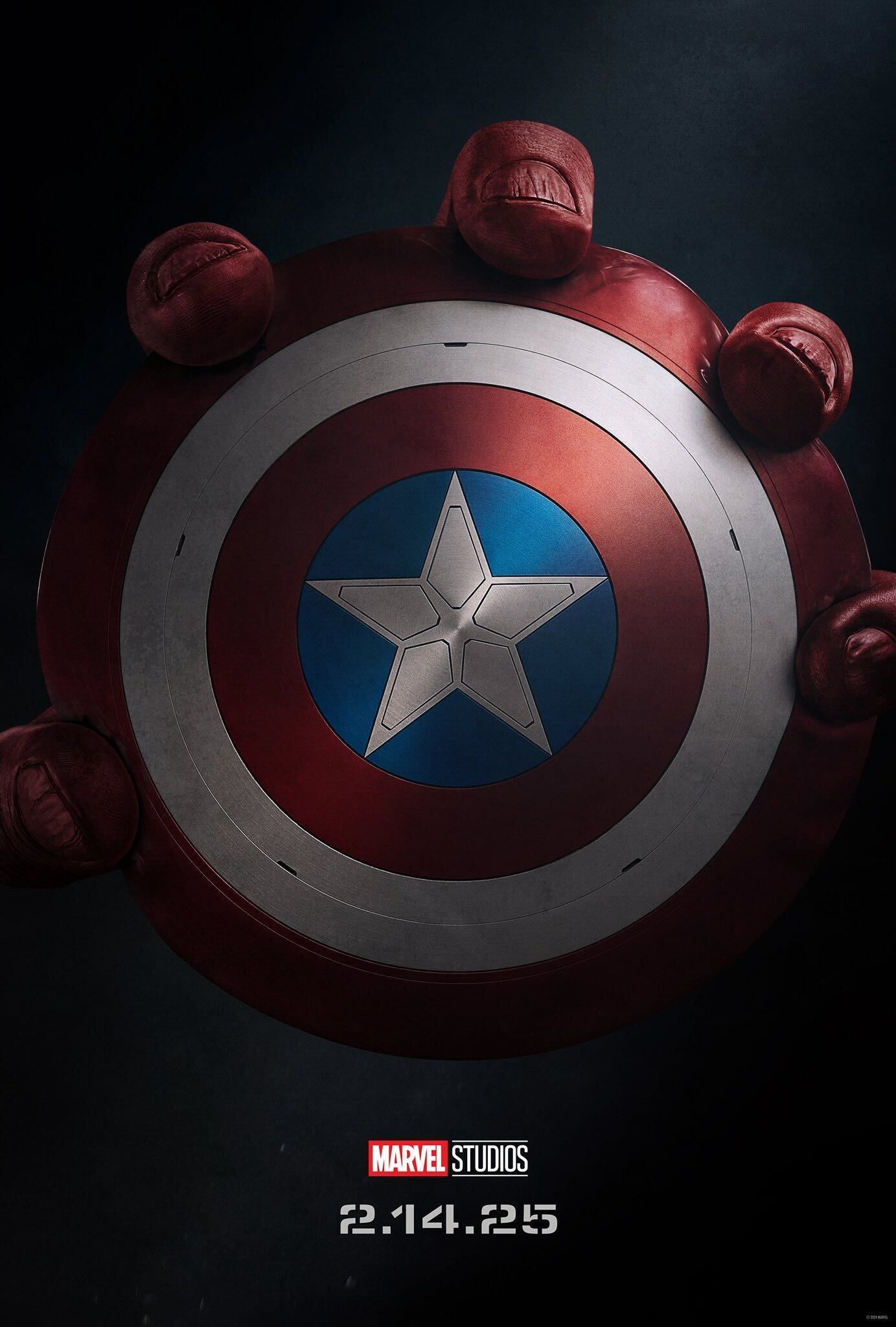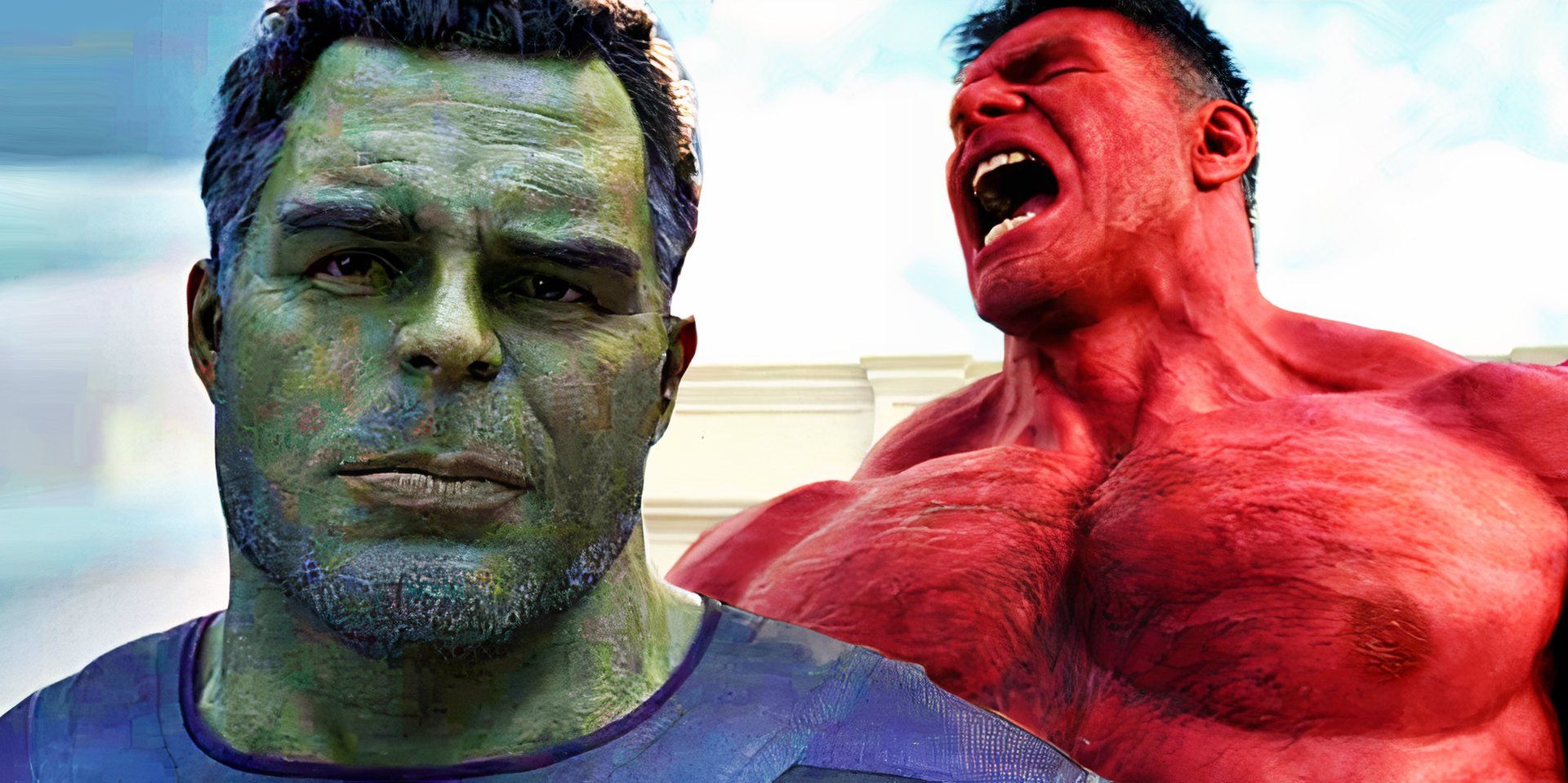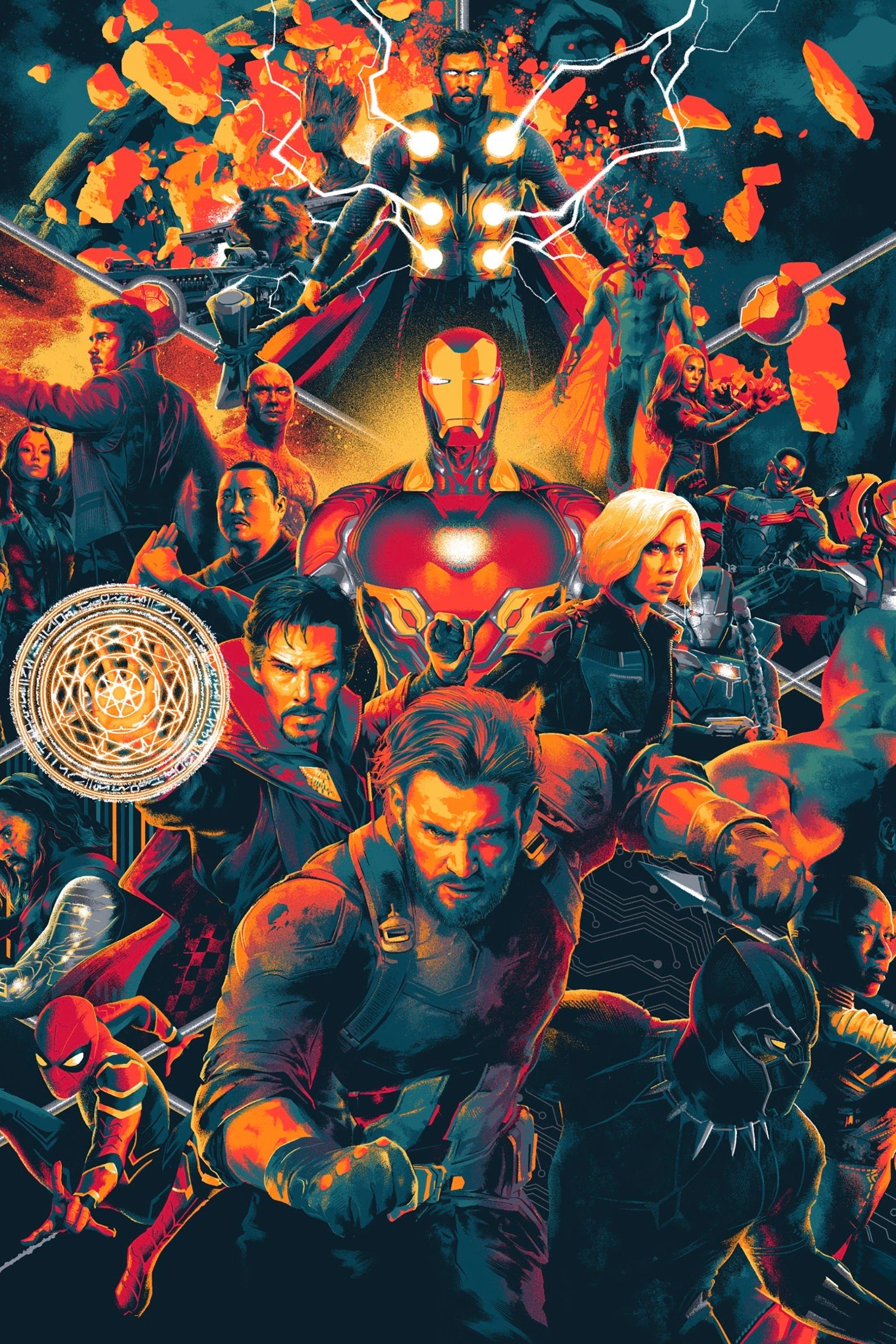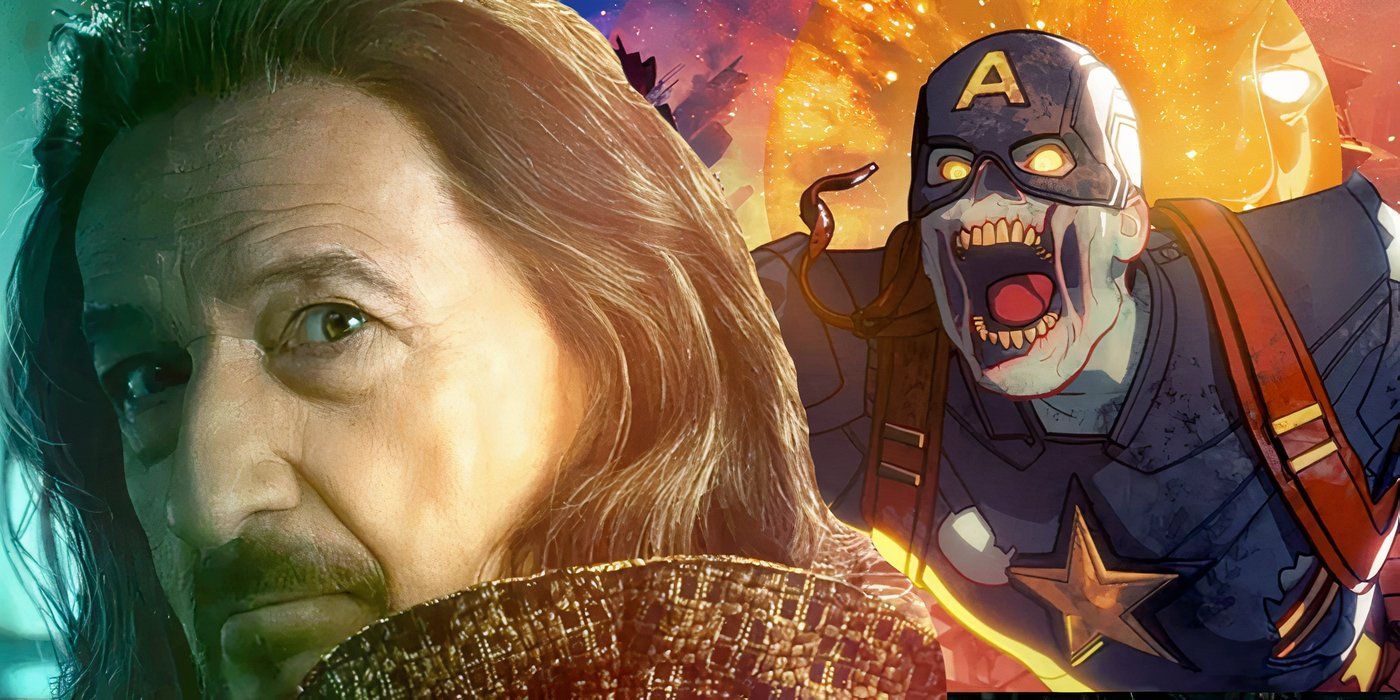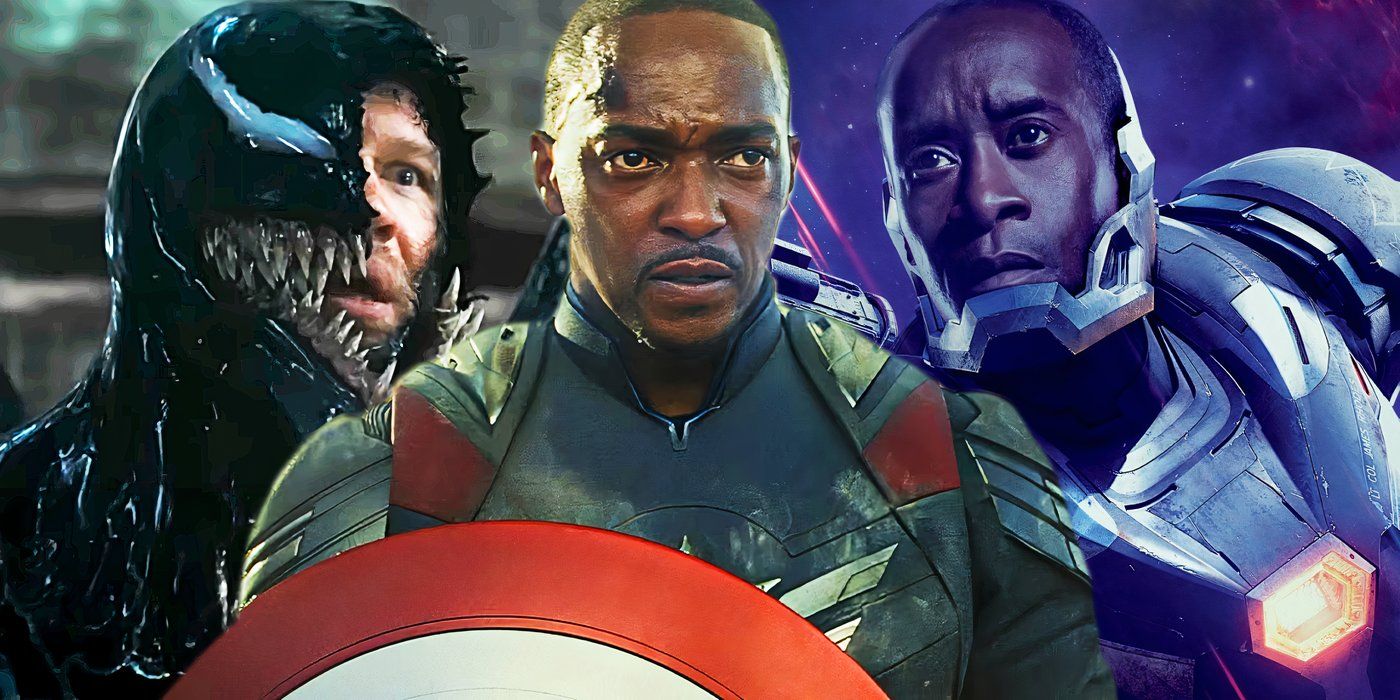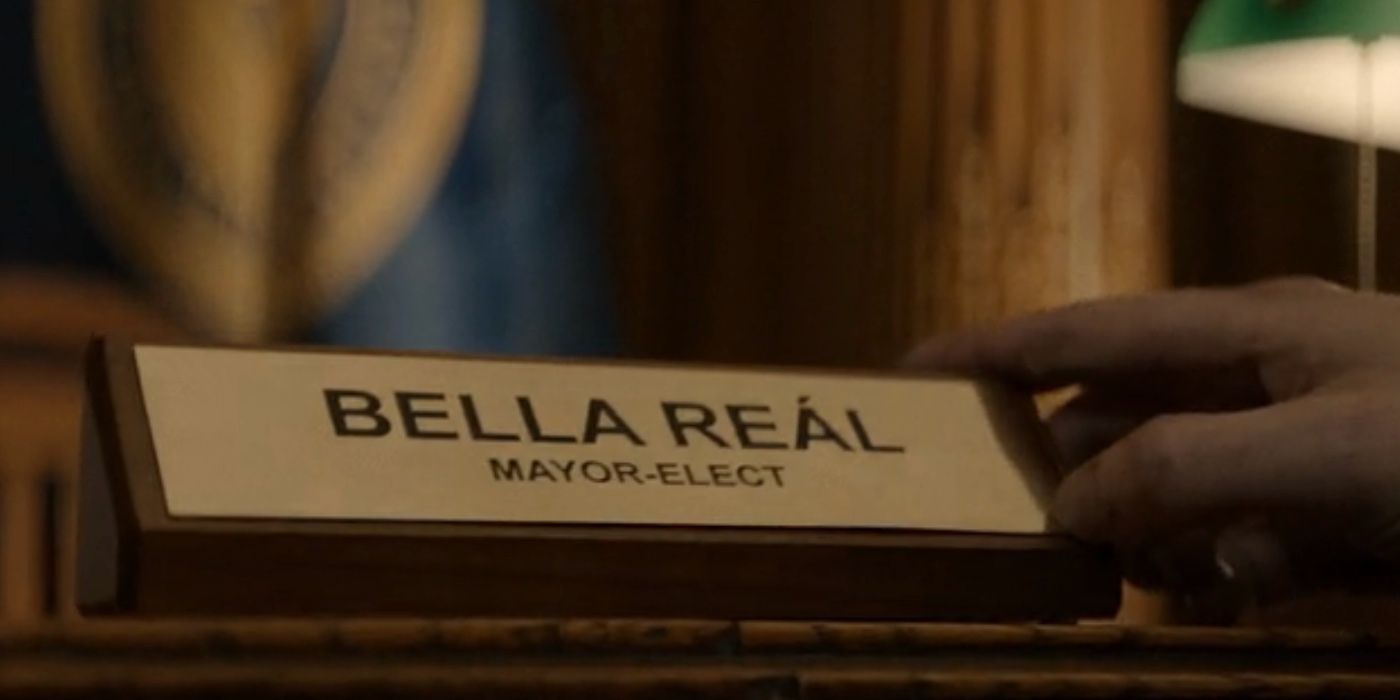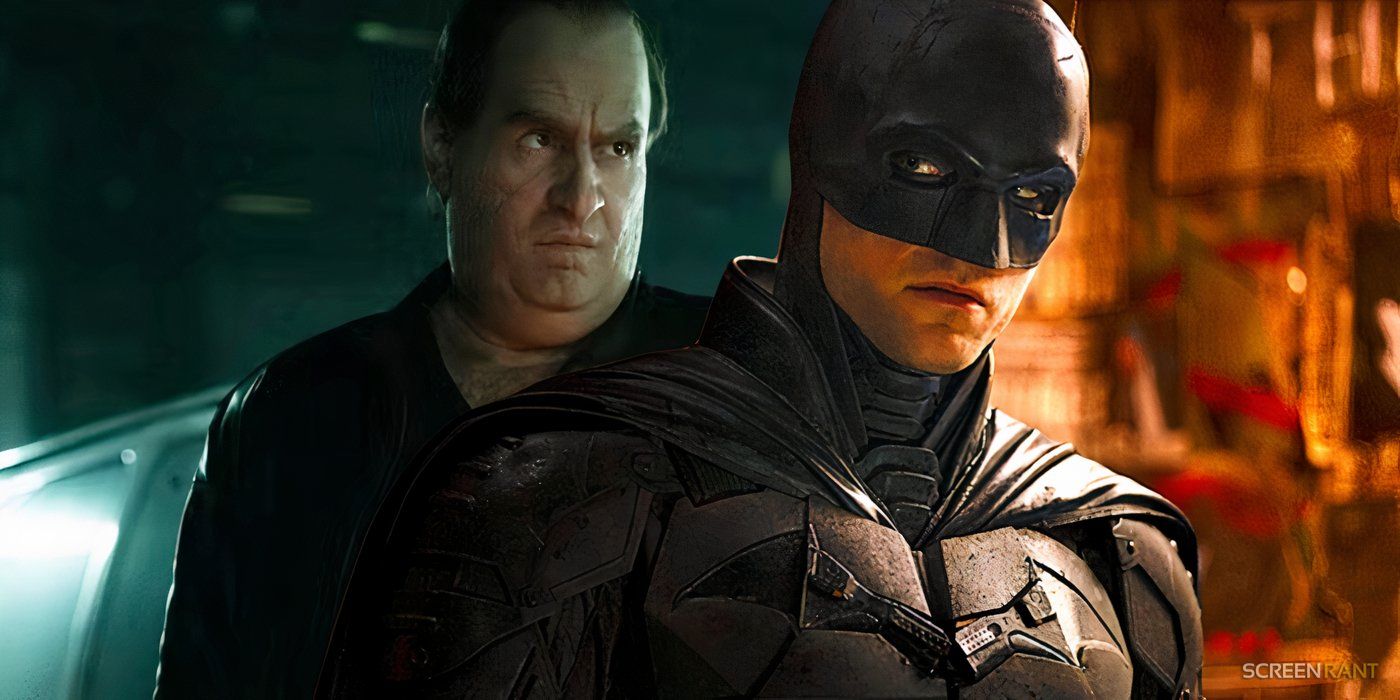10 Superpowers Smallville"s Justice League Never Used In All 10 Seasons
The CW"s Smallville had one of the earliest live-action incarnations of the Justice League, although many of its members were missing some crucial comic book powers. Across Smallville"s whopping 10 seasons, the coming-of-age drama told the story of Clark Kent on his long journey to becoming Superman, navigating high school drama alongside world-ending threats as his powers slowly manifested one after the other. Despite centering on Clark, the series took the time to establish other DC heroes with its own Justice League, even if it was missing some notable powers.
The members of Smallville"s main Justice League roster included Clark, Green Arrow, Impulse, Cyborg, and Aquaman, with many other members rotating on and off. Due to the constraints of the series" status as a syndicated CW drama, lack of budget, and difficulty managing so many characters, many of the team"s comic book powers didn"t have the chance to be included. Perhaps if the CW"s original plan to pivot season 6 of Smallville into a Justice League show manifested, dedicated viewers would"ve got to see some of these ideas realized.
10 Shapeshifting Clark![]() Because it was centered on Tom Welling"s Clark Kent, there weren"t many classic Superman powers that didn"t get at least some small screentime in the show. That being said, the Silver Age of DC comics provided Superman with many wacky unorthodox powers that he"s seldom used in other material since, many of which fell outside the scope of Smallville"s tone and production value. One of the most bizarre of which was Superman"s ability to shapeshift, a power that isn"t usually associated with the character.
Because it was centered on Tom Welling"s Clark Kent, there weren"t many classic Superman powers that didn"t get at least some small screentime in the show. That being said, the Silver Age of DC comics provided Superman with many wacky unorthodox powers that he"s seldom used in other material since, many of which fell outside the scope of Smallville"s tone and production value. One of the most bizarre of which was Superman"s ability to shapeshift, a power that isn"t usually associated with the character.
In one Silver Age comic, Superman is shown being able to manually stretch his face and body into strange, monstrous proportions in order to disguise his identity. It makes sense that Smallville didn"t feel the need to feature this power or any others like it. Shapeshifting is more associated with Martian Manhunter, a prominent character in the series and fellow Justice League member, who did get to show off the ability a few times on-screen when he shifted back into his true alien form.
9 Phasing Clark![]() In many cases in the comics, Superman is essentially capable of doing anything his peers on the Justice League can do. This confounding trait comes up often with his super speed, which is frequently applied to some of the same powers typically associated more with The Flash. One sub-power related to super speed Superman has used several times throughout the comics is the ability to vibrate his own body so fast that he becomes intangible, phasing through solid objects.
In many cases in the comics, Superman is essentially capable of doing anything his peers on the Justice League can do. This confounding trait comes up often with his super speed, which is frequently applied to some of the same powers typically associated more with The Flash. One sub-power related to super speed Superman has used several times throughout the comics is the ability to vibrate his own body so fast that he becomes intangible, phasing through solid objects.
Again, this is a power more commonly attributed to Martian Manhunter, as well as the Flash via his Speed Force. Martian Manhunter, for what its worth, does use this power in Smallville, even if it"s the result of his Martian biology rather than super speed. The Smallville Justice League resident speedster, Impulse, does use his incredible gifts to phase through solid objects as well, leaving Clark in the dust as the only character able to do so in the comics that can"t replicate the feat on daytime television.
8 Sonic Screaming Clark![]() Between heat vision and cryogenic frost breath, Smallville"s Clark Kent had a surprising amount of ranged attack options when it came to his powers. That being said, there was one projectile from the comics that he was never able to master in Smallville - the sonic scream. By using his incredible lung capacity, Superman is able to shout with enough force to generate sonic booms in a wide area, if not direct the acoustic attack in a targeted cone.
Between heat vision and cryogenic frost breath, Smallville"s Clark Kent had a surprising amount of ranged attack options when it came to his powers. That being said, there was one projectile from the comics that he was never able to master in Smallville - the sonic scream. By using his incredible lung capacity, Superman is able to shout with enough force to generate sonic booms in a wide area, if not direct the acoustic attack in a targeted cone.
Interestingly enough, Smallville actually made the sonic scream into one of Clark Kent"s few non-Kryptonite weaknesses. Characters like Black Canary and Silver Banshee, more centered around their trademark scream attacks, were able to do a shocking amount of damage to Clark in their few encounters, intentionally or not. This can be explained by Clark"s super hearing making his ears especially sensitive to noise, something that sonic attackers can weaponize against him to devastating effect. Because of this weakness, it makes sense Clark never tried a sonic scream of his own.
7 The Magic Trident Aquaman![]() Compared to the DCEU Jason Momoa Aquaman, Smallville"s Arthur Curry was weirdly comic accurate in both appearance and powerset. The show didn"t shy away from Aquaman"s more unassuming powers, such as being able to mentally control sea life, something that caused no end of jokes at Arthur"s expense. However, there was one aspect of his latent Atlantean heritage that Smallville never had the time to bestow upon Aquaman.
Compared to the DCEU Jason Momoa Aquaman, Smallville"s Arthur Curry was weirdly comic accurate in both appearance and powerset. The show didn"t shy away from Aquaman"s more unassuming powers, such as being able to mentally control sea life, something that caused no end of jokes at Arthur"s expense. However, there was one aspect of his latent Atlantean heritage that Smallville never had the time to bestow upon Aquaman.
This was none other than his famous magical trident, a weapon that has slowly become as ubiquitous to Aquaman as Mjölnir is to Marvel"s Thor. The mystical Trident of Neptune from the comics is imbued with powerful magic that allows it to do harm against even the most profane and dangerous of opponents, sometimes also having the ability to return to his hand after being thrown or even summon sea storms in other incarnations of the character. If there"s one advantage the DCEU"s Aquaman has over Smallville, it"s the presence of the intimidating signature polearm.
6 Lightning Generation Impulse![]() While the CW"s later DC universe, the Arrowverse, owed much of its success to Barry Allen in The Flash, the channel"s first attempt at a DC universe substituted Barry with his grandson, Bart Allen. The Speed Force is never mentioned by name in Smallville, but as Impulse, Bart has many of the same powers commonly associated with it, including super speed, phasing, and enhanced durability. But Impulse didn"t share every power enjoyed by CW"s The Flash, missing out on lightning generation.
While the CW"s later DC universe, the Arrowverse, owed much of its success to Barry Allen in The Flash, the channel"s first attempt at a DC universe substituted Barry with his grandson, Bart Allen. The Speed Force is never mentioned by name in Smallville, but as Impulse, Bart has many of the same powers commonly associated with it, including super speed, phasing, and enhanced durability. But Impulse didn"t share every power enjoyed by CW"s The Flash, missing out on lightning generation.
True to the lightning bolts of his costume, in the comics, like many other Speed Force users, Impulse is able to sometimes generate intense bolts of electricity. In the Arrowverse, speedsters are even capable of shaping this lightning into weapons that they then wield in combat, with Bart having a particular affinity for throwing stars. It"s too bad Impulse never got the chance to channel his electric personality through his powers in Smallville.
5 Tornado Generation Impulse![]() Lightning generation isn"t the only Speed Force-exclusive power Impulse missed out on in Smallville. A favorite trick of speedsters in CW"s The Flash, as well as Speed Force-wielders in the comics, is the ability to generate massive tornadoes by either running in a tight circle or spinning one"s limbs at super speed. Though goofy-looking, the ability to generate devastating gale-force winds and deadly cyclones can come in handy quite a bit.
Lightning generation isn"t the only Speed Force-exclusive power Impulse missed out on in Smallville. A favorite trick of speedsters in CW"s The Flash, as well as Speed Force-wielders in the comics, is the ability to generate massive tornadoes by either running in a tight circle or spinning one"s limbs at super speed. Though goofy-looking, the ability to generate devastating gale-force winds and deadly cyclones can come in handy quite a bit.
Once again, this was a power the CW was only able to commonly realize for speedsters later in the Arrowverse. Being a town in the flat Midwest prairie, tornadoes were a relatively common sight in Smallville, whether naturally-occurring or wielded by someone else. Characters like Tempest Drake and Red Tornado were able to create their own tornadoes in the Smallville continuity, even if the latter only does so in the tie-in comics.
4 The Clear Aquaman![]() One of Aquaman"s most esoteric and seldom-used powers in the DC universe lies in his connection to the mystical natural force known as "The Clear". In the DC Comics, there exists a kind of binding force that flows through all plant life, called "The Green", as well as an equivalent for terrestrial animals, known as "The Red". While characters like Swamp Thing and Poison Ivy are commonly associated with the former, while Animal Man and Vixen are connected to the latter, Aquaman has revealed his own special connection to a similar concept for marine life.
One of Aquaman"s most esoteric and seldom-used powers in the DC universe lies in his connection to the mystical natural force known as "The Clear". In the DC Comics, there exists a kind of binding force that flows through all plant life, called "The Green", as well as an equivalent for terrestrial animals, known as "The Red". While characters like Swamp Thing and Poison Ivy are commonly associated with the former, while Animal Man and Vixen are connected to the latter, Aquaman has revealed his own special connection to a similar concept for marine life.
Tapping into the clear allows Aquaman to deeply enrich his senses in the comics, connecting him to the entire global ocean. Thanks to all life"s humble origins in the sea, if he pushes this connection, he can even use The Clear to form a psychic connection with land-dwellers, as well. As such a difficult power to realize and explain in live-action, it"s not surprising that concepts like The Green, The Red, or The Clear never made it to screen in Smallville.
3 Independent Limb Operation Cyborg![]() Long before his appearance in the DCEU, Smallville gave a core spot on the Justice League roster to a live-action Cyborg. Of course, owing to their budgetary constraints, the series" version of Victor Stone was quite more limited by his cybernetic enhancements, with all of his robotic parts lying underneath the skin. In addition to diluting Cyborg"s core struggle as a character that struggles to be accepted for how he looks, this restriction also forced the show to give up on demonstrating some of Cyborg"s coolest powers.
Long before his appearance in the DCEU, Smallville gave a core spot on the Justice League roster to a live-action Cyborg. Of course, owing to their budgetary constraints, the series" version of Victor Stone was quite more limited by his cybernetic enhancements, with all of his robotic parts lying underneath the skin. In addition to diluting Cyborg"s core struggle as a character that struggles to be accepted for how he looks, this restriction also forced the show to give up on demonstrating some of Cyborg"s coolest powers.
One of the biggest misses was Cyborg"s lack of independent limb operation. Being mostly mechanical, Cyborg is often able to detach his limbs and still maintain a mental connection with them, allowing himself to use his arms or even legs at an impressive distance. This power was made famous by Cyborg in the 2003 Teen Titans animated show. Perhaps Cyborg will finally get to use this power in live-action in the upcoming DCU Teen Titans movie after missing on out it in the DCEU as well.
2 Weapon Generation Martian Manhunter![]() J"onn J"onzz, a.k.a. John Jones, was one of the most important recurring heroes in Smallville that would eventually go on to join the Justice League as Martian Manhunter. In the comics, Martian Manhunter has a dizzying array of powers, including shapeshifting, phasing, telepathy, and flight. Smallville was surprisingly able to show off an impressive number of these powers in live-action thanks to Jones" enduring presence, but there was one crucial aspect of Martian Manhunter"s combat style that they missed out on.
J"onn J"onzz, a.k.a. John Jones, was one of the most important recurring heroes in Smallville that would eventually go on to join the Justice League as Martian Manhunter. In the comics, Martian Manhunter has a dizzying array of powers, including shapeshifting, phasing, telepathy, and flight. Smallville was surprisingly able to show off an impressive number of these powers in live-action thanks to Jones" enduring presence, but there was one crucial aspect of Martian Manhunter"s combat style that they missed out on.
In the comics and other media, Martian Manhunter frequently uses his shapeshifting to form crude weapons with his limbs, including blades and hammers, giving him a literal edge in melee combat. Sadly, Smallville"s limited production values never afforded the show a chance to show off what might be Jones" flashiest power. The only time the series shows J"onn J"onzz use his shapeshifting is when he morphs from John Jones to his truly alien visage.
1 Time Travel Clark, Impulse![]() At multiple points throughout its run, Smallville flirted with the idea of time travel, sowing seeds for a time-traveling Kyrptonian as early as season 2. While the show"s cast occasionally gets flung through time by various means, Clark Kent is never the one to initiate it with the strength of his own power alone. Meanwhile, Superman in the 1978 movie is able to turn back time by flying around the globe so fast that he reverses the spin of the Earth, somehow also reversing the flow of time itself.
At multiple points throughout its run, Smallville flirted with the idea of time travel, sowing seeds for a time-traveling Kyrptonian as early as season 2. While the show"s cast occasionally gets flung through time by various means, Clark Kent is never the one to initiate it with the strength of his own power alone. Meanwhile, Superman in the 1978 movie is able to turn back time by flying around the globe so fast that he reverses the spin of the Earth, somehow also reversing the flow of time itself.
The character more commonly associated with time travel on Smallville"s Justice League is actually Impulse. Being a tourist from the 31st century, Impulse accidentally time travels in the show after being struck by the same bolt of lightning that gives him his powers. In the comics, however, he"s able to do so very intentionally via the use of the Speed Force, a concept that Smallville didn"t spend all that much time explaining.
Upcoming DC Movie Releases
[圖擷取自網路,如有疑問請私訊]
The members of Smallville"s main Justice League roster included Clark, Green Arrow, Impulse, Cyborg, and Aquaman, with many other members rotating on and off. Due to the constraints of the series" status as a syndicated CW drama, lack of budget, and difficulty managing so many characters, many of the team"s comic book powers didn"t have the chance to be included. Perhaps if the CW"s original plan to pivot season 6 of Smallville into a Justice League show manifested, dedicated viewers would"ve got to see some of these ideas realized.
10 Shapeshifting Clark
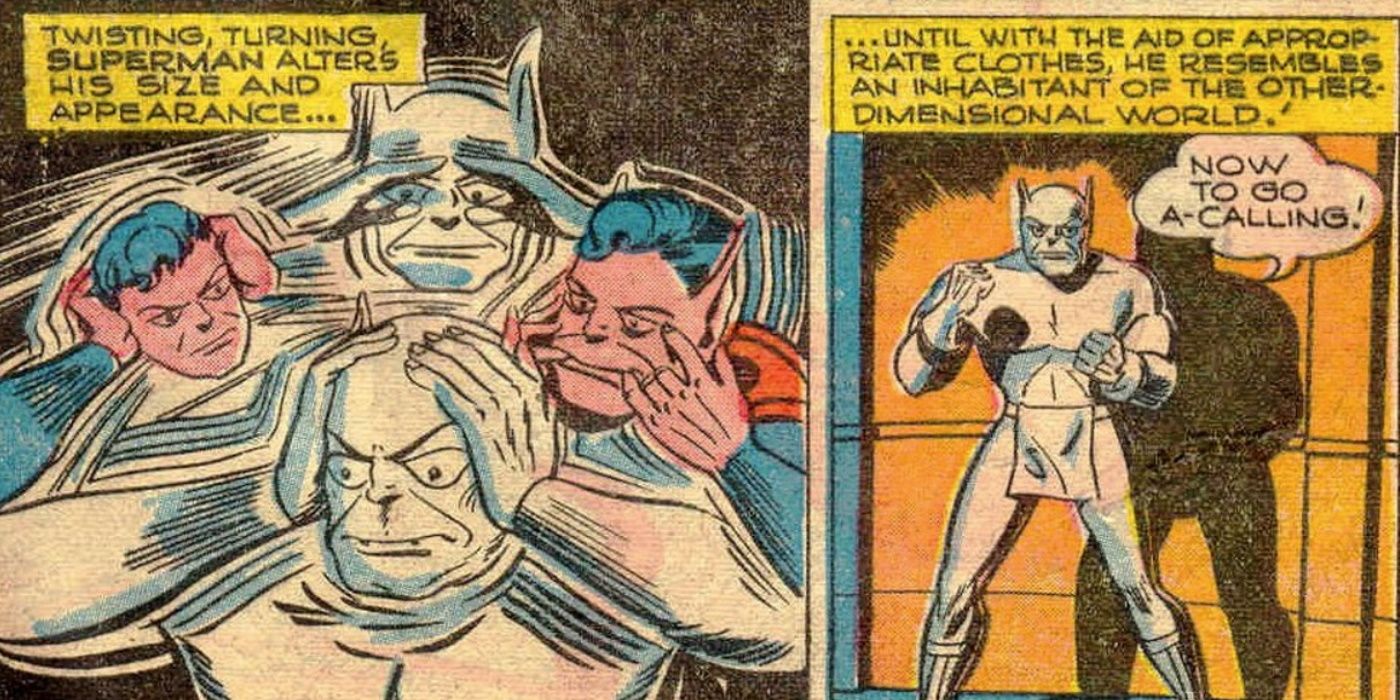 Because it was centered on Tom Welling"s Clark Kent, there weren"t many classic Superman powers that didn"t get at least some small screentime in the show. That being said, the Silver Age of DC comics provided Superman with many wacky unorthodox powers that he"s seldom used in other material since, many of which fell outside the scope of Smallville"s tone and production value. One of the most bizarre of which was Superman"s ability to shapeshift, a power that isn"t usually associated with the character.
Because it was centered on Tom Welling"s Clark Kent, there weren"t many classic Superman powers that didn"t get at least some small screentime in the show. That being said, the Silver Age of DC comics provided Superman with many wacky unorthodox powers that he"s seldom used in other material since, many of which fell outside the scope of Smallville"s tone and production value. One of the most bizarre of which was Superman"s ability to shapeshift, a power that isn"t usually associated with the character. In one Silver Age comic, Superman is shown being able to manually stretch his face and body into strange, monstrous proportions in order to disguise his identity. It makes sense that Smallville didn"t feel the need to feature this power or any others like it. Shapeshifting is more associated with Martian Manhunter, a prominent character in the series and fellow Justice League member, who did get to show off the ability a few times on-screen when he shifted back into his true alien form.
9 Phasing Clark
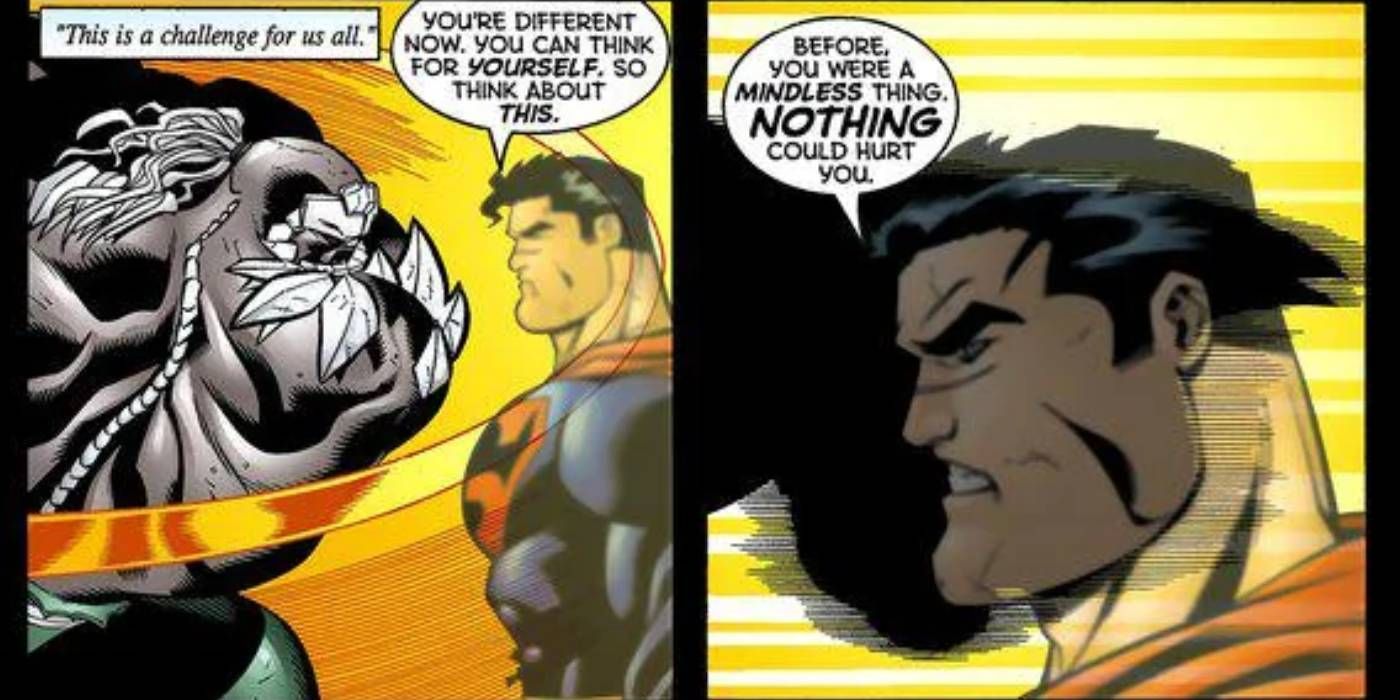 In many cases in the comics, Superman is essentially capable of doing anything his peers on the Justice League can do. This confounding trait comes up often with his super speed, which is frequently applied to some of the same powers typically associated more with The Flash. One sub-power related to super speed Superman has used several times throughout the comics is the ability to vibrate his own body so fast that he becomes intangible, phasing through solid objects.
In many cases in the comics, Superman is essentially capable of doing anything his peers on the Justice League can do. This confounding trait comes up often with his super speed, which is frequently applied to some of the same powers typically associated more with The Flash. One sub-power related to super speed Superman has used several times throughout the comics is the ability to vibrate his own body so fast that he becomes intangible, phasing through solid objects.Again, this is a power more commonly attributed to Martian Manhunter, as well as the Flash via his Speed Force. Martian Manhunter, for what its worth, does use this power in Smallville, even if it"s the result of his Martian biology rather than super speed. The Smallville Justice League resident speedster, Impulse, does use his incredible gifts to phase through solid objects as well, leaving Clark in the dust as the only character able to do so in the comics that can"t replicate the feat on daytime television.
8 Sonic Screaming Clark
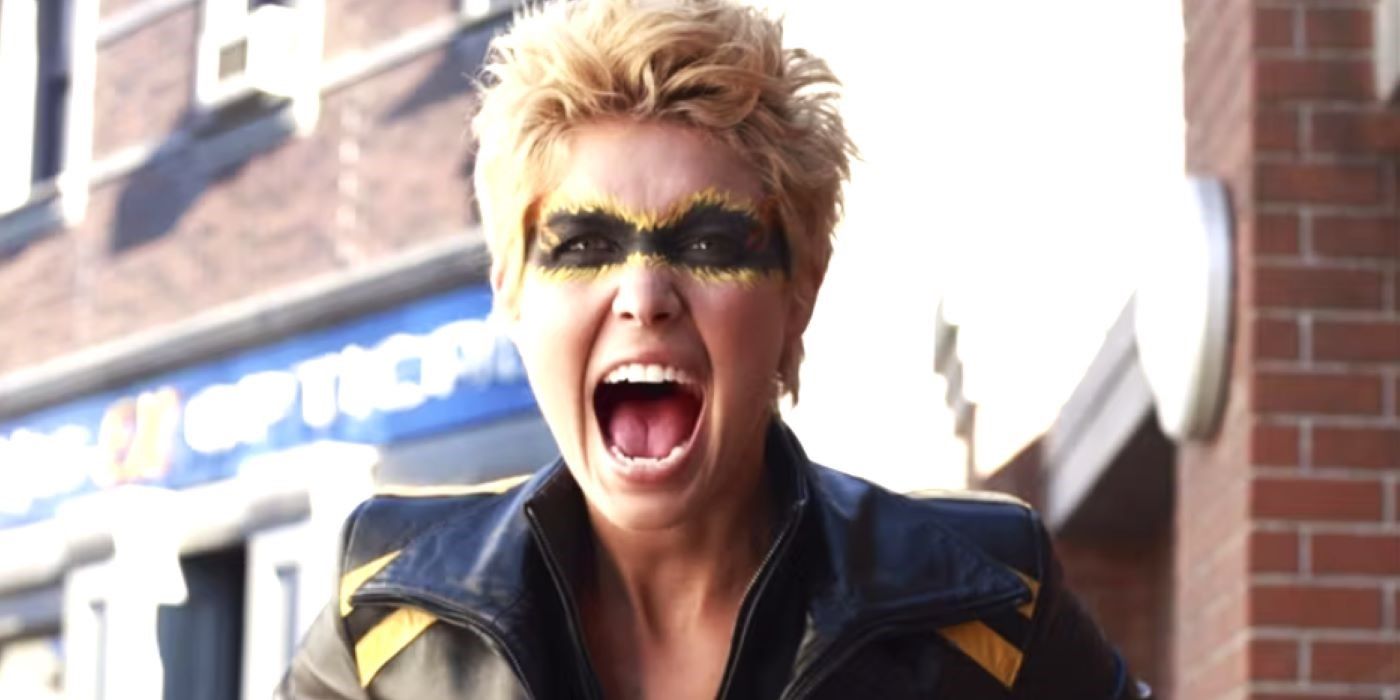 Between heat vision and cryogenic frost breath, Smallville"s Clark Kent had a surprising amount of ranged attack options when it came to his powers. That being said, there was one projectile from the comics that he was never able to master in Smallville - the sonic scream. By using his incredible lung capacity, Superman is able to shout with enough force to generate sonic booms in a wide area, if not direct the acoustic attack in a targeted cone.
Between heat vision and cryogenic frost breath, Smallville"s Clark Kent had a surprising amount of ranged attack options when it came to his powers. That being said, there was one projectile from the comics that he was never able to master in Smallville - the sonic scream. By using his incredible lung capacity, Superman is able to shout with enough force to generate sonic booms in a wide area, if not direct the acoustic attack in a targeted cone. Interestingly enough, Smallville actually made the sonic scream into one of Clark Kent"s few non-Kryptonite weaknesses. Characters like Black Canary and Silver Banshee, more centered around their trademark scream attacks, were able to do a shocking amount of damage to Clark in their few encounters, intentionally or not. This can be explained by Clark"s super hearing making his ears especially sensitive to noise, something that sonic attackers can weaponize against him to devastating effect. Because of this weakness, it makes sense Clark never tried a sonic scream of his own.
7 The Magic Trident Aquaman
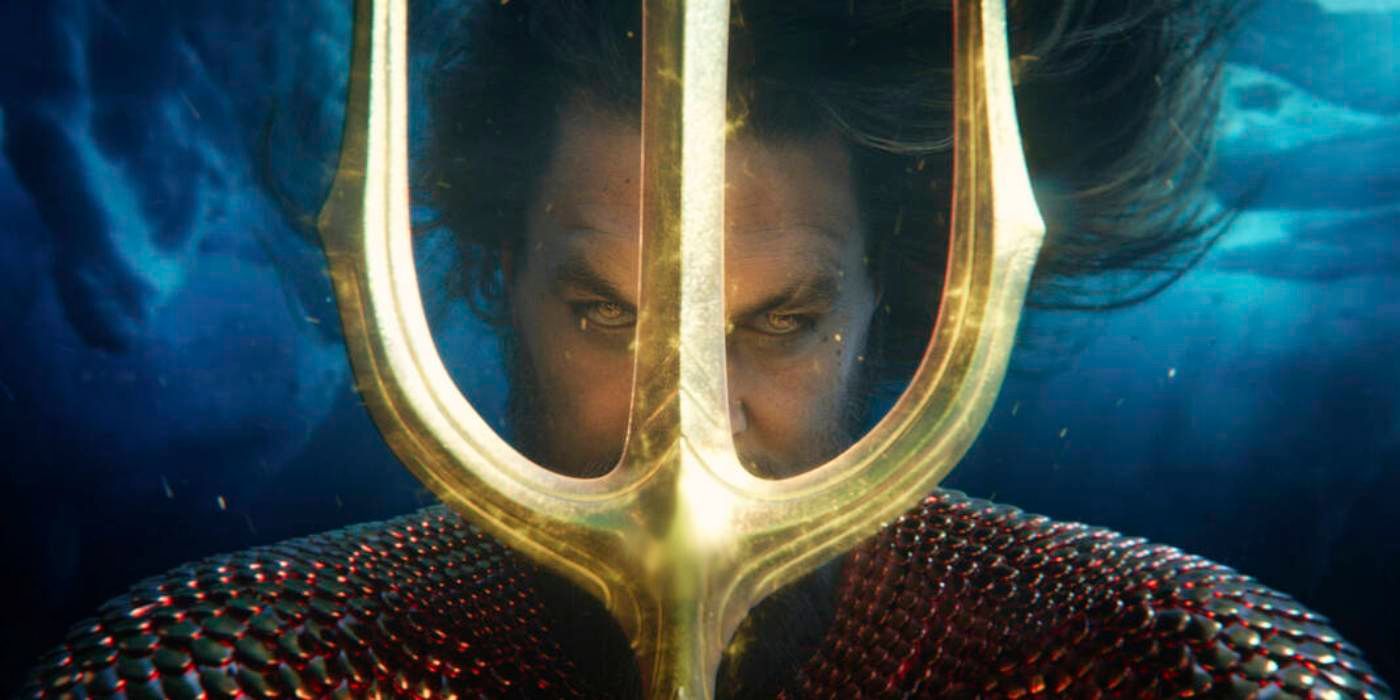 Compared to the DCEU Jason Momoa Aquaman, Smallville"s Arthur Curry was weirdly comic accurate in both appearance and powerset. The show didn"t shy away from Aquaman"s more unassuming powers, such as being able to mentally control sea life, something that caused no end of jokes at Arthur"s expense. However, there was one aspect of his latent Atlantean heritage that Smallville never had the time to bestow upon Aquaman.
Compared to the DCEU Jason Momoa Aquaman, Smallville"s Arthur Curry was weirdly comic accurate in both appearance and powerset. The show didn"t shy away from Aquaman"s more unassuming powers, such as being able to mentally control sea life, something that caused no end of jokes at Arthur"s expense. However, there was one aspect of his latent Atlantean heritage that Smallville never had the time to bestow upon Aquaman. This was none other than his famous magical trident, a weapon that has slowly become as ubiquitous to Aquaman as Mjölnir is to Marvel"s Thor. The mystical Trident of Neptune from the comics is imbued with powerful magic that allows it to do harm against even the most profane and dangerous of opponents, sometimes also having the ability to return to his hand after being thrown or even summon sea storms in other incarnations of the character. If there"s one advantage the DCEU"s Aquaman has over Smallville, it"s the presence of the intimidating signature polearm.
6 Lightning Generation Impulse
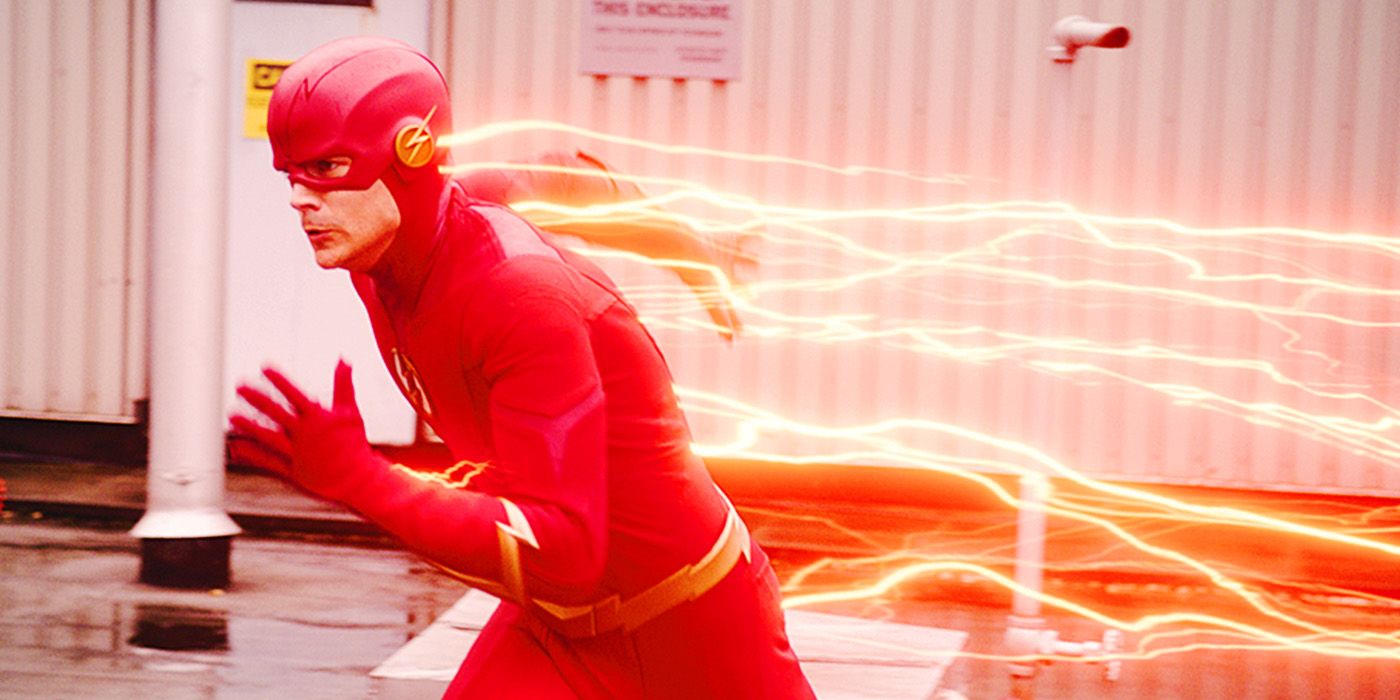 While the CW"s later DC universe, the Arrowverse, owed much of its success to Barry Allen in The Flash, the channel"s first attempt at a DC universe substituted Barry with his grandson, Bart Allen. The Speed Force is never mentioned by name in Smallville, but as Impulse, Bart has many of the same powers commonly associated with it, including super speed, phasing, and enhanced durability. But Impulse didn"t share every power enjoyed by CW"s The Flash, missing out on lightning generation.
While the CW"s later DC universe, the Arrowverse, owed much of its success to Barry Allen in The Flash, the channel"s first attempt at a DC universe substituted Barry with his grandson, Bart Allen. The Speed Force is never mentioned by name in Smallville, but as Impulse, Bart has many of the same powers commonly associated with it, including super speed, phasing, and enhanced durability. But Impulse didn"t share every power enjoyed by CW"s The Flash, missing out on lightning generation.True to the lightning bolts of his costume, in the comics, like many other Speed Force users, Impulse is able to sometimes generate intense bolts of electricity. In the Arrowverse, speedsters are even capable of shaping this lightning into weapons that they then wield in combat, with Bart having a particular affinity for throwing stars. It"s too bad Impulse never got the chance to channel his electric personality through his powers in Smallville.
5 Tornado Generation Impulse
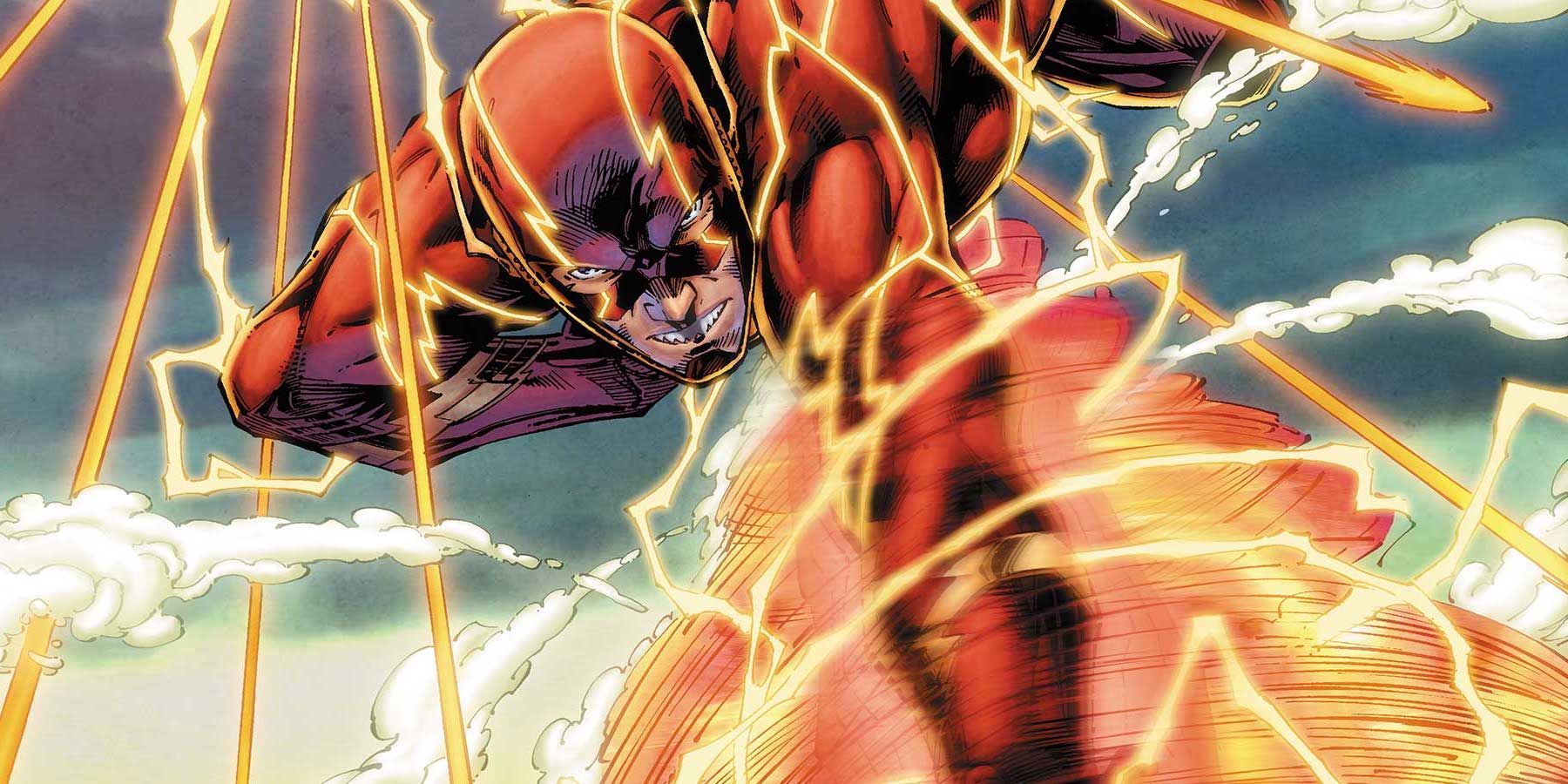 Lightning generation isn"t the only Speed Force-exclusive power Impulse missed out on in Smallville. A favorite trick of speedsters in CW"s The Flash, as well as Speed Force-wielders in the comics, is the ability to generate massive tornadoes by either running in a tight circle or spinning one"s limbs at super speed. Though goofy-looking, the ability to generate devastating gale-force winds and deadly cyclones can come in handy quite a bit.
Lightning generation isn"t the only Speed Force-exclusive power Impulse missed out on in Smallville. A favorite trick of speedsters in CW"s The Flash, as well as Speed Force-wielders in the comics, is the ability to generate massive tornadoes by either running in a tight circle or spinning one"s limbs at super speed. Though goofy-looking, the ability to generate devastating gale-force winds and deadly cyclones can come in handy quite a bit.Once again, this was a power the CW was only able to commonly realize for speedsters later in the Arrowverse. Being a town in the flat Midwest prairie, tornadoes were a relatively common sight in Smallville, whether naturally-occurring or wielded by someone else. Characters like Tempest Drake and Red Tornado were able to create their own tornadoes in the Smallville continuity, even if the latter only does so in the tie-in comics.
4 The Clear Aquaman
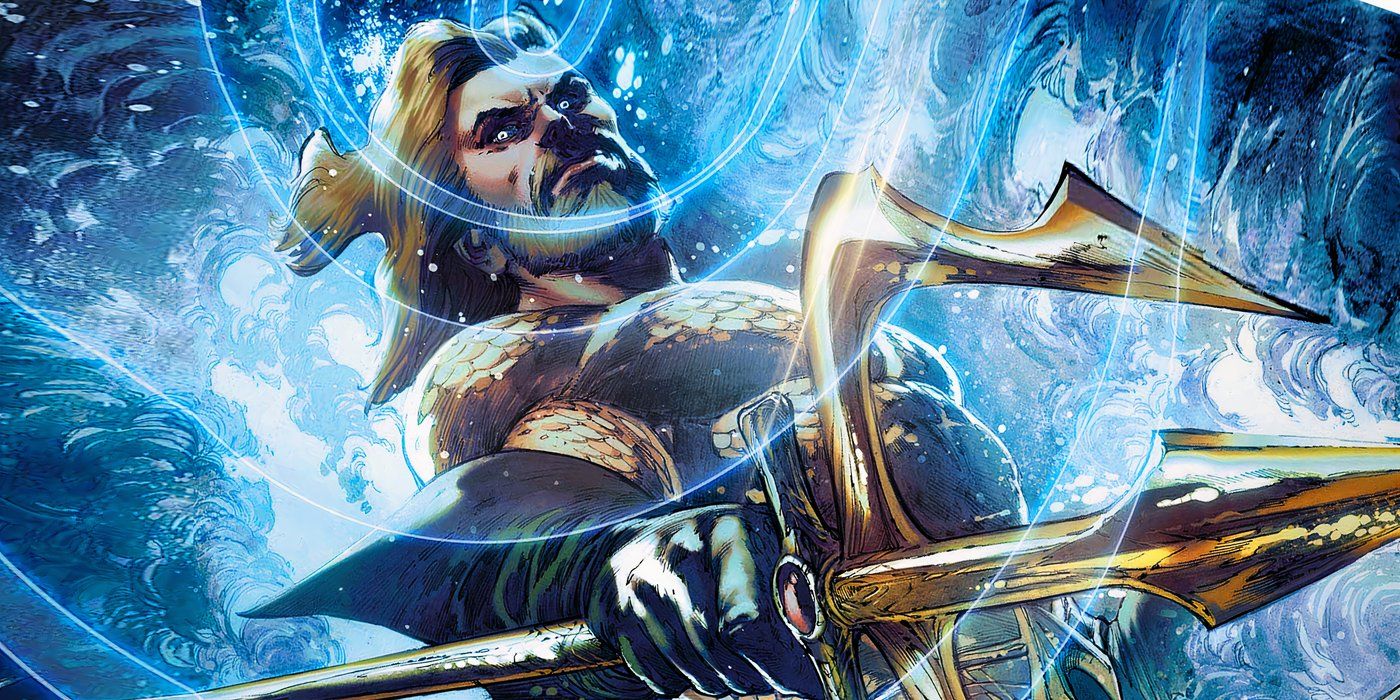 One of Aquaman"s most esoteric and seldom-used powers in the DC universe lies in his connection to the mystical natural force known as "The Clear". In the DC Comics, there exists a kind of binding force that flows through all plant life, called "The Green", as well as an equivalent for terrestrial animals, known as "The Red". While characters like Swamp Thing and Poison Ivy are commonly associated with the former, while Animal Man and Vixen are connected to the latter, Aquaman has revealed his own special connection to a similar concept for marine life.
One of Aquaman"s most esoteric and seldom-used powers in the DC universe lies in his connection to the mystical natural force known as "The Clear". In the DC Comics, there exists a kind of binding force that flows through all plant life, called "The Green", as well as an equivalent for terrestrial animals, known as "The Red". While characters like Swamp Thing and Poison Ivy are commonly associated with the former, while Animal Man and Vixen are connected to the latter, Aquaman has revealed his own special connection to a similar concept for marine life. Tapping into the clear allows Aquaman to deeply enrich his senses in the comics, connecting him to the entire global ocean. Thanks to all life"s humble origins in the sea, if he pushes this connection, he can even use The Clear to form a psychic connection with land-dwellers, as well. As such a difficult power to realize and explain in live-action, it"s not surprising that concepts like The Green, The Red, or The Clear never made it to screen in Smallville.
3 Independent Limb Operation Cyborg
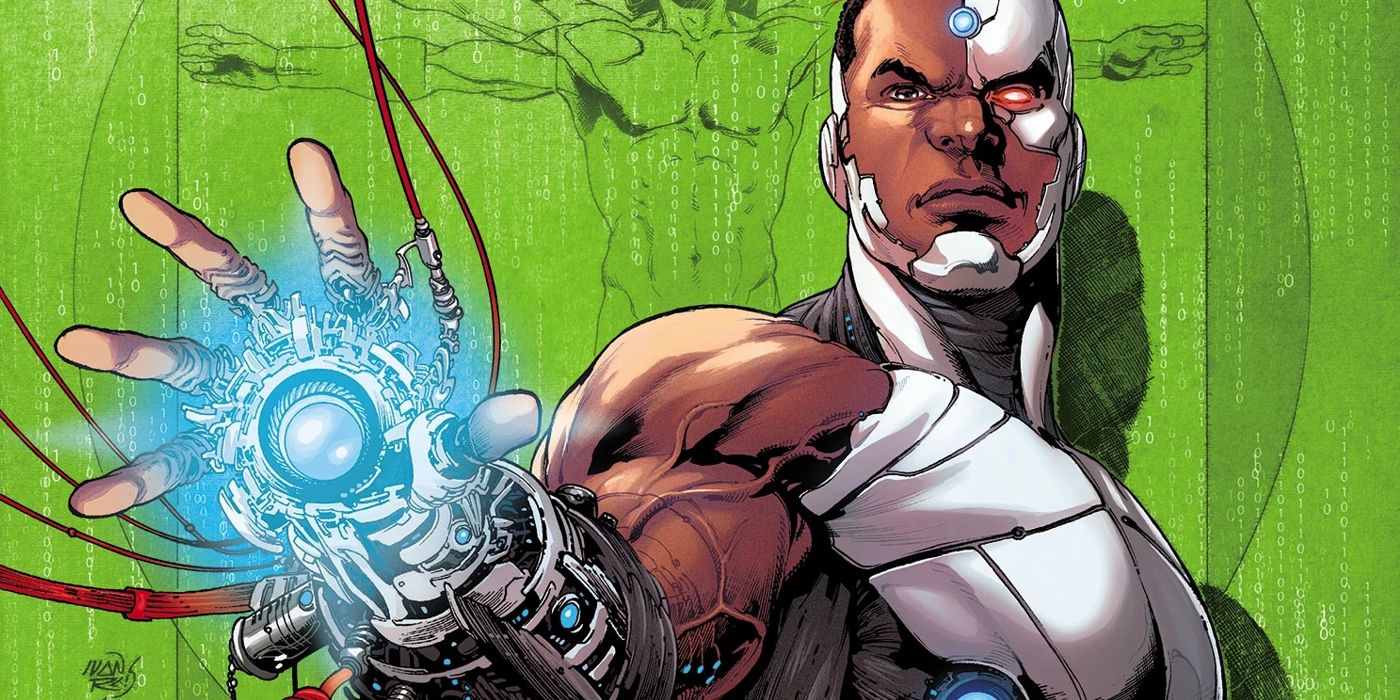 Long before his appearance in the DCEU, Smallville gave a core spot on the Justice League roster to a live-action Cyborg. Of course, owing to their budgetary constraints, the series" version of Victor Stone was quite more limited by his cybernetic enhancements, with all of his robotic parts lying underneath the skin. In addition to diluting Cyborg"s core struggle as a character that struggles to be accepted for how he looks, this restriction also forced the show to give up on demonstrating some of Cyborg"s coolest powers.
Long before his appearance in the DCEU, Smallville gave a core spot on the Justice League roster to a live-action Cyborg. Of course, owing to their budgetary constraints, the series" version of Victor Stone was quite more limited by his cybernetic enhancements, with all of his robotic parts lying underneath the skin. In addition to diluting Cyborg"s core struggle as a character that struggles to be accepted for how he looks, this restriction also forced the show to give up on demonstrating some of Cyborg"s coolest powers. One of the biggest misses was Cyborg"s lack of independent limb operation. Being mostly mechanical, Cyborg is often able to detach his limbs and still maintain a mental connection with them, allowing himself to use his arms or even legs at an impressive distance. This power was made famous by Cyborg in the 2003 Teen Titans animated show. Perhaps Cyborg will finally get to use this power in live-action in the upcoming DCU Teen Titans movie after missing on out it in the DCEU as well.
2 Weapon Generation Martian Manhunter
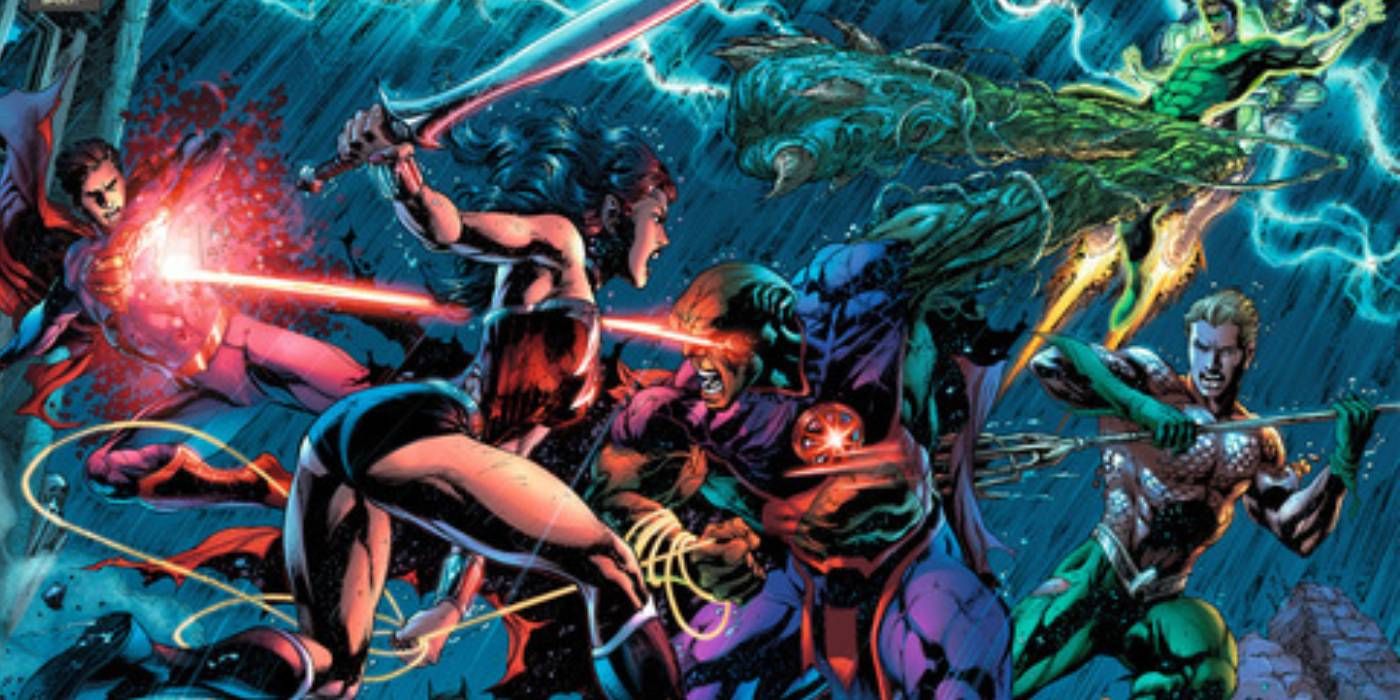 J"onn J"onzz, a.k.a. John Jones, was one of the most important recurring heroes in Smallville that would eventually go on to join the Justice League as Martian Manhunter. In the comics, Martian Manhunter has a dizzying array of powers, including shapeshifting, phasing, telepathy, and flight. Smallville was surprisingly able to show off an impressive number of these powers in live-action thanks to Jones" enduring presence, but there was one crucial aspect of Martian Manhunter"s combat style that they missed out on.
J"onn J"onzz, a.k.a. John Jones, was one of the most important recurring heroes in Smallville that would eventually go on to join the Justice League as Martian Manhunter. In the comics, Martian Manhunter has a dizzying array of powers, including shapeshifting, phasing, telepathy, and flight. Smallville was surprisingly able to show off an impressive number of these powers in live-action thanks to Jones" enduring presence, but there was one crucial aspect of Martian Manhunter"s combat style that they missed out on. In the comics and other media, Martian Manhunter frequently uses his shapeshifting to form crude weapons with his limbs, including blades and hammers, giving him a literal edge in melee combat. Sadly, Smallville"s limited production values never afforded the show a chance to show off what might be Jones" flashiest power. The only time the series shows J"onn J"onzz use his shapeshifting is when he morphs from John Jones to his truly alien visage.
1 Time Travel Clark, Impulse
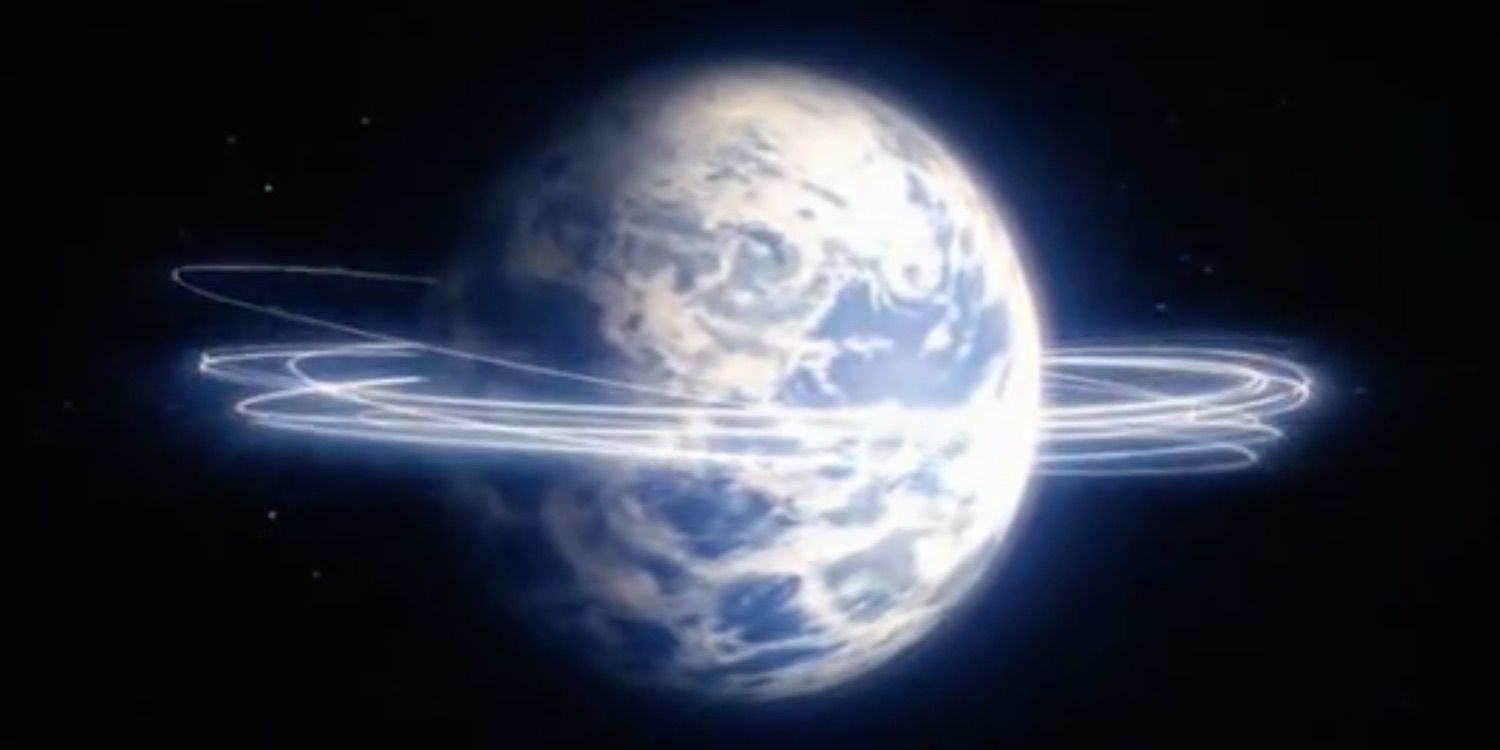 At multiple points throughout its run, Smallville flirted with the idea of time travel, sowing seeds for a time-traveling Kyrptonian as early as season 2. While the show"s cast occasionally gets flung through time by various means, Clark Kent is never the one to initiate it with the strength of his own power alone. Meanwhile, Superman in the 1978 movie is able to turn back time by flying around the globe so fast that he reverses the spin of the Earth, somehow also reversing the flow of time itself.
At multiple points throughout its run, Smallville flirted with the idea of time travel, sowing seeds for a time-traveling Kyrptonian as early as season 2. While the show"s cast occasionally gets flung through time by various means, Clark Kent is never the one to initiate it with the strength of his own power alone. Meanwhile, Superman in the 1978 movie is able to turn back time by flying around the globe so fast that he reverses the spin of the Earth, somehow also reversing the flow of time itself. The character more commonly associated with time travel on Smallville"s Justice League is actually Impulse. Being a tourist from the 31st century, Impulse accidentally time travels in the show after being struck by the same bolt of lightning that gives him his powers. In the comics, however, he"s able to do so very intentionally via the use of the Speed Force, a concept that Smallville didn"t spend all that much time explaining.
Upcoming DC Movie Releases
[圖擷取自網路,如有疑問請私訊]
|
本篇 |
不想錯過? 請追蹤FB專頁! |
| 喜歡這篇嗎?快分享吧! |
相關文章
tag_dc








